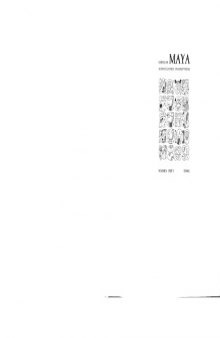دانلود کتاب Corpus of Maya Hieroglyphic Inscriptions 4.2 (Uxmal)
by Ian Graham|
|
عنوان فارسی: قسمت چهارم مقالات چهارگانه ایوگلیفیک مایا 4.2 (Uxmal) |
 دانلود کتاب
دانلود کتاب
 جزییات کتاب
جزییات کتاب
THE CORPUS OF MAYA HIEROGLYPHIC INSCRIPTIONS PROGRAM
PEABODY MUSEUM OF ARCHAEOLOGY AND ETHNOLOGY
HARVARD UNIVERSITY
Background
Since its inception in 1968, the Corpus of Maya Hieroglyphic Inscriptions (CMHI) has been the leading program for recording ancient Maya hieroglyphs, one of the most artistic and creative graphic writing systems in the world. Founding Director, Ian Graham, a pioneer who laid the foundations for recording the ancient Maya hieroglyphic texts, created an unsurpassed register of carved monuments that has been instrumental in their decipherment.
Dates
1966 Luminaries in the field in including, Dr. Ignacio Bernal, Dr. Michael D. Coe, Dr. Gordon F. Ekholm, Dr. Luis Lujan Munoz, Dr. Floyd Lounsbury, Tatiana Proskouriakoff, and Dr. Gordon R. Willey, envisioned the project that forever changed the way Maya hieroglyphs were recorded and understood.
1968 Ian Graham appointed as the program's founding director.
1968, Funding provided by the Edgar H. Brenner of the Stella and Charles Guttman Foundation and the National Endowment for the Humanities
1968-present, Program housed in the Peabody Museum of Archaeology and Ethnology at Harvard University
2004, Ian Graham donated his life's work to Harvard's Peabody Museum where it remains a unique collection, the largest archival collection and publication series of Maya hieroglyphic texts in the world.
Historical accomplishments
Set the standards for hieroglyphic recording
Produced meticulous scientific photographs and accurate illustrations superceding those made in the 19th century.
Published 19 fascicles published with the Peabody Museum Press
Compiled a vast archive of unpublished data (field maps, drawing, photos, and references) that continues to be an invaluable resource for epigraphers and researchers.
Standardized nomenclature for sites and monuments
Set forth a three-letter abbreviation for each site, monument type and number (e.g. Yaxchilan Stela 3 is YAX:St.3)









 این کتاب رو مطالعه کردید؟ نظر شما چیست؟
این کتاب رو مطالعه کردید؟ نظر شما چیست؟
